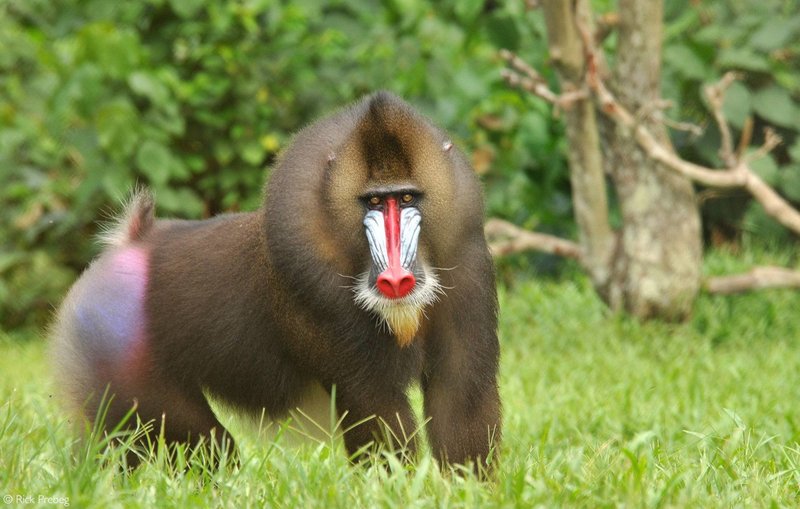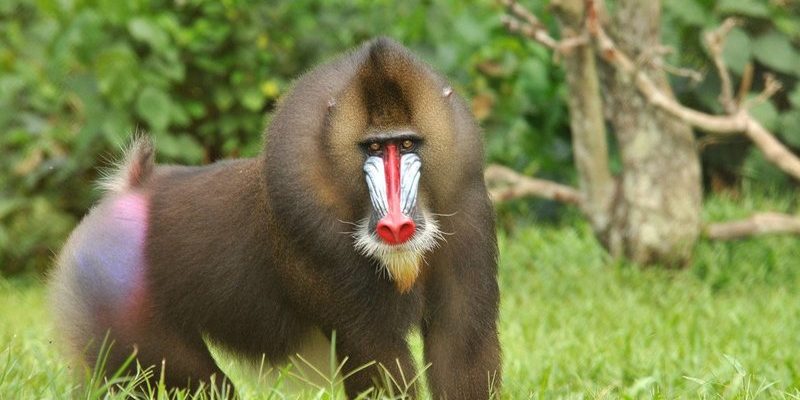
You might wonder why a creature like the mandrill captures our imaginations so deeply. Perhaps it’s the blend of beauty and strangeness that resonates with us. Just as we find meaning in art, the mandrill has become a significant part of various cultural narratives. Let’s dive into how this incredible animal is represented in different cultures and folklore, exploring the themes and motifs that surround it.
Mandrills in African Folklore
In many African cultures, the mandrill holds a special place in folklore. One of the most common representations is as a trickster figure. These stories often depict the mandrill outsmarting others, showcasing its intelligence and adaptability. In this role, the mandrill teaches lessons about cleverness and the power of wit.
For example, a common folktale might tell of a mandrill who tricks a boastful lion, reminding us that wisdom can trump brute strength. These tales often serve as moral lessons, emphasizing the value of being sharp-witted in challenging situations. It’s a classic David versus Goliath narrative where the unexpected hero prevails through cunning, not force.
Interestingly, the mandrill also symbolizes community and family spirit in some cultures. Stories may highlight its social nature, showcasing how mandrills work together, support each other, and build strong bonds. This portrayal reflects the communal values prominent in many African societies, reinforcing the idea that unity brings strength.
Symbolism in Art and Literature
The mandrill’s striking appearance makes it a popular subject in art and literature around the world. Often represented in vibrant colors, it symbolizes not just beauty but also complexity. Artists and writers use the mandrill to explore themes of identity, emotion, and the human experience.
In literature, authors might use the mandrill as a character to delve into issues of self-discovery and inner conflict. Its unique features can mirror the struggles of feeling out of place or different in society. Just like the mandrill stands out in the animal kingdom, characters inspired by it often navigate their own paths to acceptance.
Moreover, in modern art, the mandrill appears as a metaphor for strength and resilience. Its colorful face can evoke a spectrum of feelings and ideas, encouraging viewers to reflect on their own diversity and the beauty found within it. This artistic representation further cements the mandrill’s role as a symbol of individuality and self-expression.
Mandrills in Popular Culture
You might be surprised to learn that the mandrill has made quite an impact in pop culture too! For instance, the character Rafiki from Disney’s “The Lion King” is a mandrill. He serves as a wise and quirky guide, representing wisdom and the importance of connecting with one’s roots. This portrayal has helped introduce the mandrill to a global audience, giving people a glimpse of its fascinating nature.
The mandrill also appears in various video games and animated series, often portrayed with its signature bold colors and expressive behaviors. Game developers use this character design to symbolize strength and agility, drawing on the traits that make mandrills unique. This not only entertains but also educates players about the animal and its habitat.
As we see the mandrill pop up in different mediums, it becomes a bridge between cultures, allowing people from different backgrounds to appreciate and learn about this remarkable creature. This cultural representation reinforces our shared love of wildlife and the stories they inspire.
Spiritual Significance of the Mandrill
In some traditions, the mandrill is more than just a fascinating creature; it holds spiritual significance. In certain African spiritual beliefs, the mandrill is viewed as a guide or messenger. Its striking appearance and social behavior can symbolize the connection between the physical and spiritual worlds.
A mandrill sighting might be interpreted as a sign to pay attention to one’s instincts or a reminder to embrace change. This belief emphasizes the animal’s role in mediating between humans and the spiritual realm. People may reflect on their experiences and challenges when they think of the mandrill as a spiritual guide.
Interestingly, some cultures regard the mandrill as a protector of knowledge. By embodying wisdom, it encourages individuals to seek understanding and enlightenment. This idea adds a layer of depth to the mandrill’s representation, turning it into a symbol of enlightenment that transcends mere physical attributes.
The Mandrill in Conservation Efforts
As awareness of environmental issues grows, the mandrill is becoming a symbol for conservation efforts as well. Its beauty and vulnerability highlight the importance of protecting rainforests and the diverse species that inhabit them. Organizations often use images of mandrills in campaigns to raise awareness about habitat loss and wildlife conservation.
By portraying the mandrill as an “ambassador” for its habitat, these efforts foster a greater connection between people and wildlife. They remind us that protecting one species can have a ripple effect, helping countless others thrive in their ecosystems. The mandrill, with its distinct features and cultural significance, serves as a powerful reminder of the interconnectedness of life.
Additionally, educational programs often use the mandrill as a focal point in teaching about biodiversity and the necessity of conservation. Through these initiatives, people learn not just about the mandrill but also the intricate web of life in which it exists, making the case for a more sustainable future.
The mandrill, with its vibrant colors and expressive features, serves as a rich source of inspiration across various cultures and forms of storytelling. From folklore and literature to art and conservation efforts, this remarkable primate embodies diverse meanings and symbols. Its role as a trickster, a representative of community, and a spiritual guide reveals deep cultural connections that transcend borders.
Through the lens of the mandrill, we gain insight into our own values, struggles, and aspirations. Whether it’s depicted in a folktale, vibrant artwork, or a beloved animated character, the mandrill reminds us of the beauty of diversity—both in nature and within ourselves. So next time you encounter this fascinating creature, take a moment to appreciate the rich tapestry of stories it weaves in our global culture.

